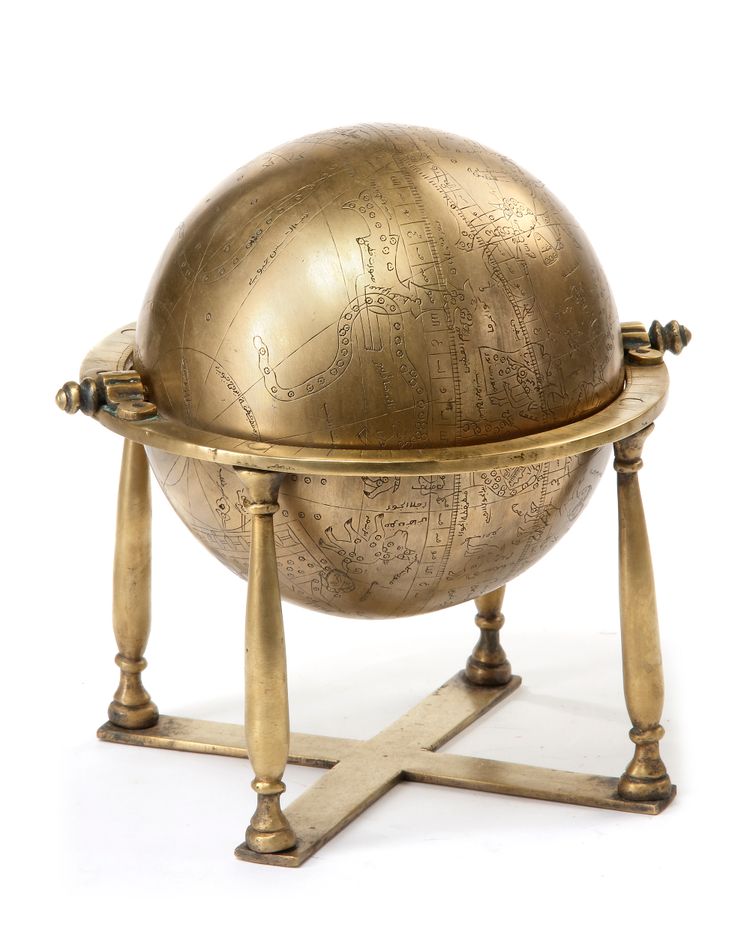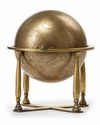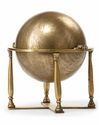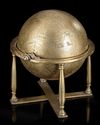A CELESTIAL GLOBE, MADE BY MUGHAL ASTROLABIST MUHAMMAD SALIH OF THATTA, DATED 1074 AH/1663 AD
Brass celestial globe made by the prominent Mughal astrolabist Tatawi in 1073 AH/ 1662-1663 AD. This celestial globe is one of the four known celestial globes of the maker.
Circa 21 cm. height and 21 cm. diam.
ENGRAVING
It full complement of 1018 star position are marked by engraved dots enclosed within circles. This, in contrary to his other globes, where he uses inlaid silver for making star positions. . The outlines of 48 constellation figures are drawn carefully. On the globe the celestial equator and the ecliptic are represented by double bands of lines, where the narrower band is graduated in single degrees and the broader band encompassing 6 degrees are numbered in are abjad notation. The tropics, polar circles and ecliptic latitude circles are marked by single lines. The horizon ring also has two bands of lines, where the narrower band is graduated in single degrees and wider band in groups of 6°.
The maker’s inscription is inside the southern polar circle and reads “The work of Muhammad Salih Tatawi”
THE MATERIAL AND BUILD
It is a seamless hollow globe made of brass with a visible diameter of 15 cm. The axis of the globe passes through the poles of the equator and rests on a ring supported by a quadruped stand [height: 13 cm ] with spindle like legs supported by a base formed by two cross bars. The axis is furnished with to decorative endpieces on both ends.
THE MAKER
The prominent Mughal astrolabist Muhammad Salih of Thatta or Muhammad Salih Tatawi (fl. 1659-1667) was active in the vicinity of the Mughal Court either in Agra and or Delhi and seems to have played a significant role as intermediary between the Arabic/Islamic and Hindu traditions of astronomy. So far, only three astrolabes and two celestial globes made by him are known to have survived.
PROVENANCE
1991 Rajasthan
1992 Private collection, Bangalore
2021 Private collection, Germany
LITERATURE
This instrument was described for the first time in [Sarma, Ansari & Kurkarni. 1993], For a description of the makers life and a descriptions of his other instruments see [Sarma, 2021] and [Savage-Smith, 1995]
S. R. Sarma, S. M. R. Ansari & A. G. Kulkarni, Two Mughal Celestial Globes, Indian Journal of History of Science 28 (1), 1993 [Contains a detailed description of our instrument]
S.R. Sarma, A Descriptive Catalogue of Astronomical Instruments
Emilie Savage-Smith. Islamicate Celestial Globes, Smithsonian Institutions Press, 1985








